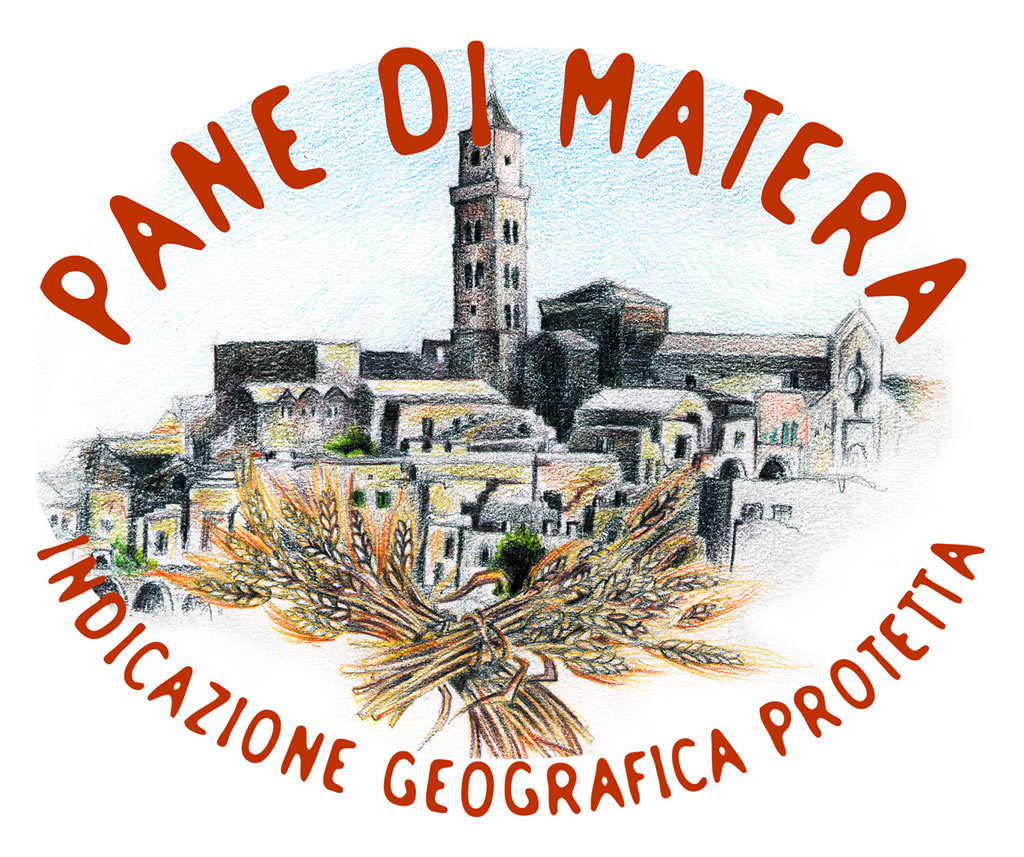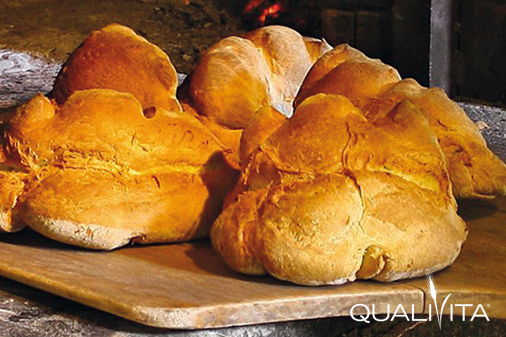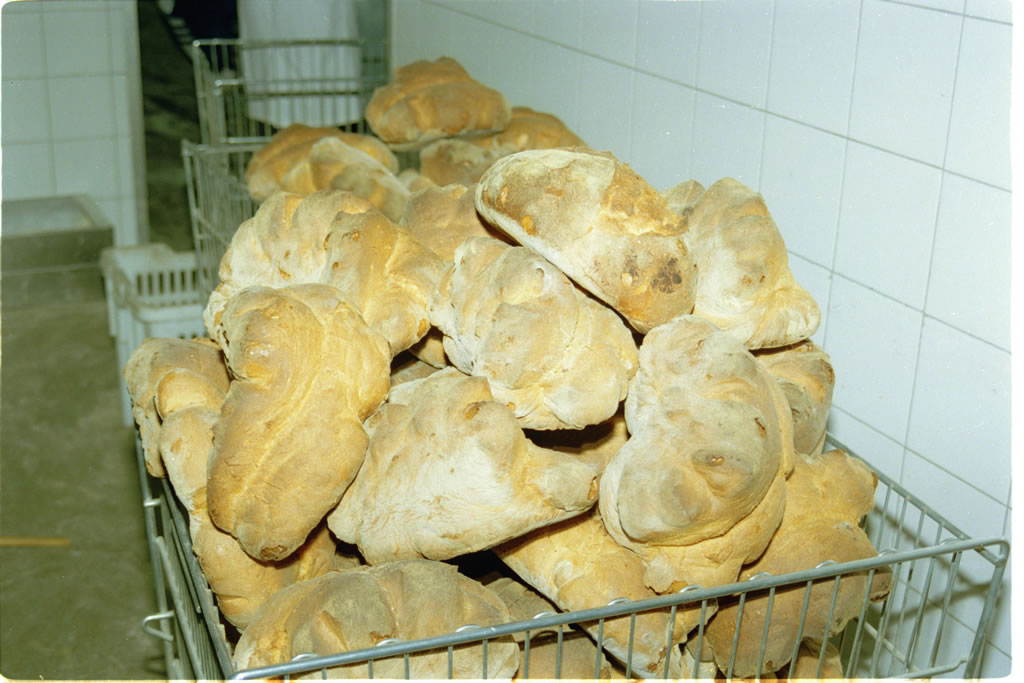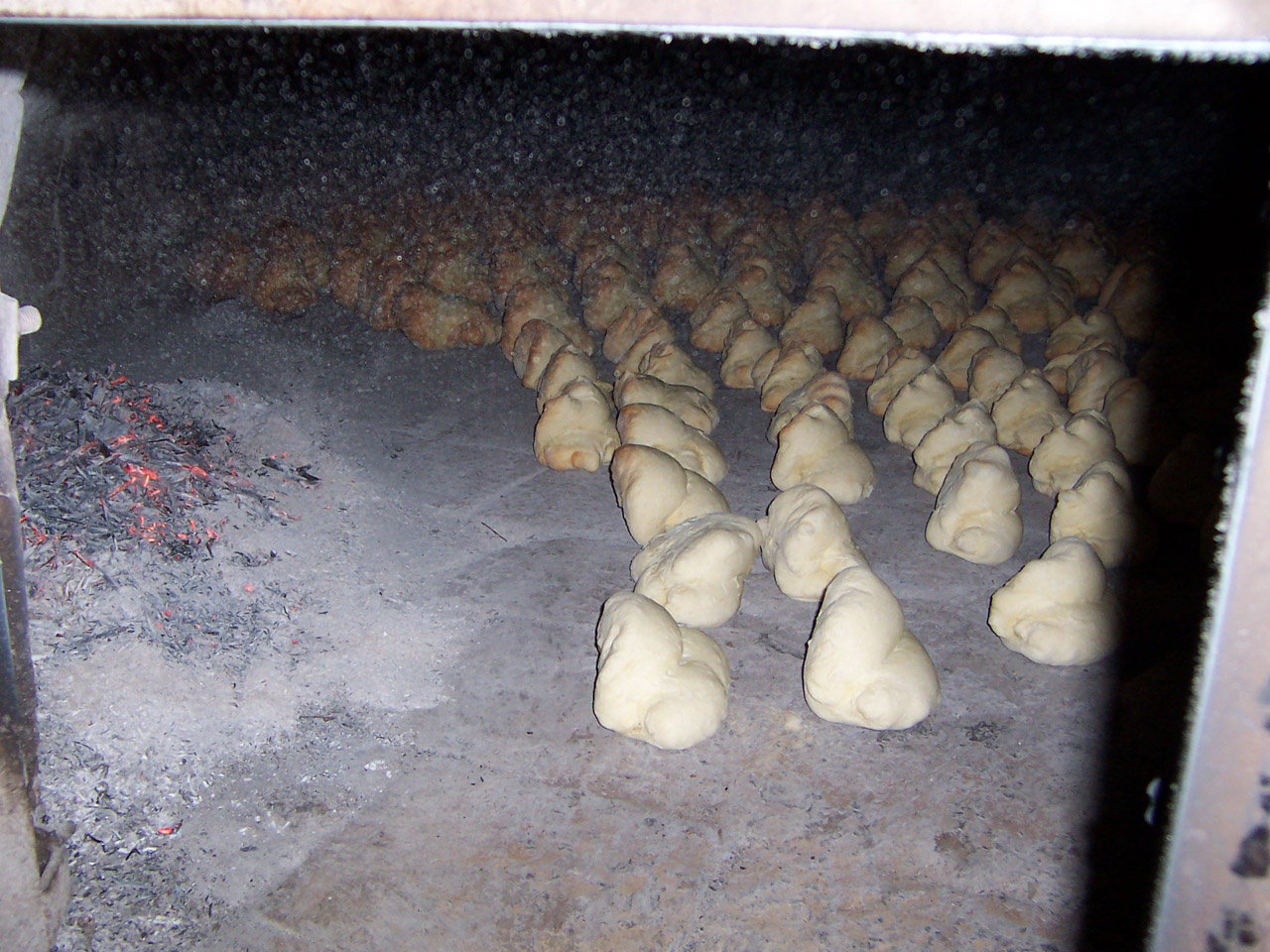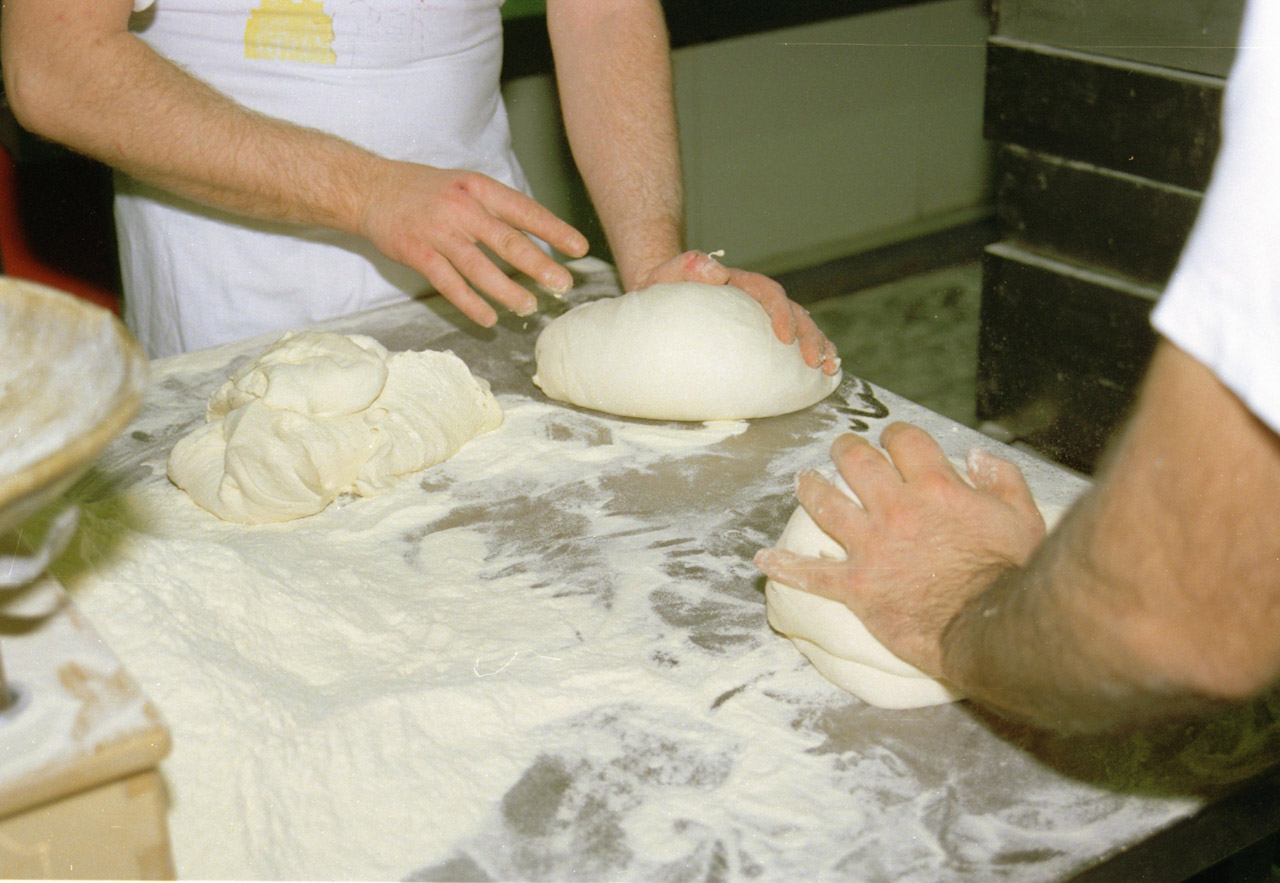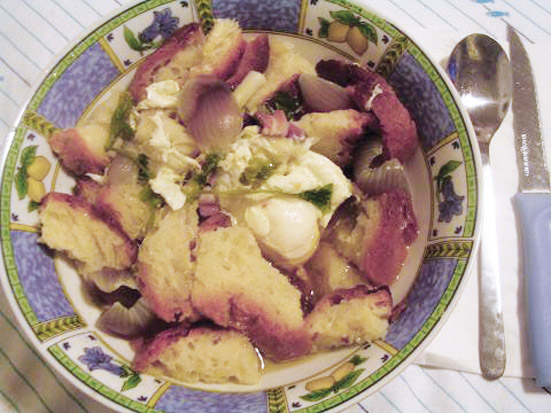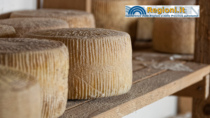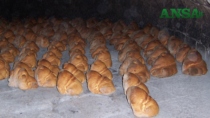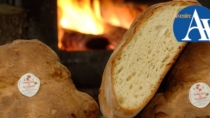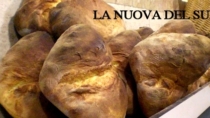Description
Pane di Matera PGI is bread obtained from re-ground semolina and/or Durum wheat semolina, of which at least 20% comes from local ecotypes and old varieties, to which natural yeast (mother yeast), salt and water are added.
Production Area
The production area of Pane di Matera PGI is within the entire territory of the Province of Matera, in the Basilicata region.
Production Method
Mother yeast obtained from the flesh of fresh ripe fruit macerated in water for 48 hours, is used to leaven the dough of Pane di Matera PGI. The compote is added to water and semolina, and the mixture is sealed inside a jute cylinder for 10-12 hours, at 26-30 °C, until it doubles its volume; at this stage, flour is added, the quantity of which is equal to the weight of the mixture. The ingredients are kneaded in a kneading machine and the dough is then left to leaven in a vat for 25-35 minutes. Once risen, the dough is divided into portions ranging from 600 g to 12 kg and weighed to obtain a final product of between 500 g and 10 kg, the range of which can vary by 10%. The portions are shaped by hand and left to rest in wooden or stainless-steel containers for 25-30 minutes, covered with cloths. The final characteristic shape of Pane di Matera PGI is then created manually and the loaves are marked on the top with a pressure stamp bearing the uppercase letters "MT". They are baked in wood-burning or indirect heating ovens. The cooking time varies depending on the size of the loaves and the type of oven used, ranging from a minimum of 1 hour for 500 g loaves to a maximum of 4 hours and 30 minutes for 10 kg loaves.
Appearance and Flavour
Pane di Matera PGI comes in two shapes: Cornetto (horn shape, long and slightly convex); Forma Alta (high and firm, with the edges “touching” on the sides. The crust is crispy, golden brown and 2-3 mm thick, with a typically burnt smell. The bread is yellow with typical, very irregular porosity, while the taste and smell are very characteristic.
History
The art of bread making has been part of local tradition since ancient times. There is evidence of particular local bread-making techniques dating back to the times of the Kingdom of Naples. There are also numerous artistic and literary testimonies in the production area of Pane di Matera PGI, as well as legends and folktales, which attest to the importance of bread in the region’s life and economy.
Gastronomy
Pane di Matera PGI must be kept in a dry place. To keep the fragrance intact, it is best to keep it wrapped in a linen cloth. The 1 kg loaf will keep for up to seven days, while the 10 kg loaf will keep for up to fourteen. It is delicious eaten fresh out of the oven and is especially good combined with local charcuterie products and cheeses. It is also ideal for making the traditional feddarauss (bruschetta) with tomatoes, olive oil and oregano. It is often used for hot or cold vegetable soups, such as the typical cialledda coll, a hot soup made with bread, water and onions or tomatoes, with the addition of local vegetables as desired.
Marketing
The product is marketed as Pane di Matera PGI, in the following varieties: Cornetto and Forma Alta. It is sold fresh in loaves weighing from 500 g to 10 kg, which must be marked with the uppercase letters "MT". It must be packaged in food-grade micro perforated plastic film or food-grade paper bags. When the bread is baked in a wood oven, the wording “Pane cotto in forno a legna” can be displayed on the packaging.
Distinctive Features
The decision to use old wheat varieties like Senatore Cappelli, which give Pane di Matera PGI its unmistakable taste and flavour, can be traced back to the pedologic and climatic characteristics of the hilly area of Matera.



